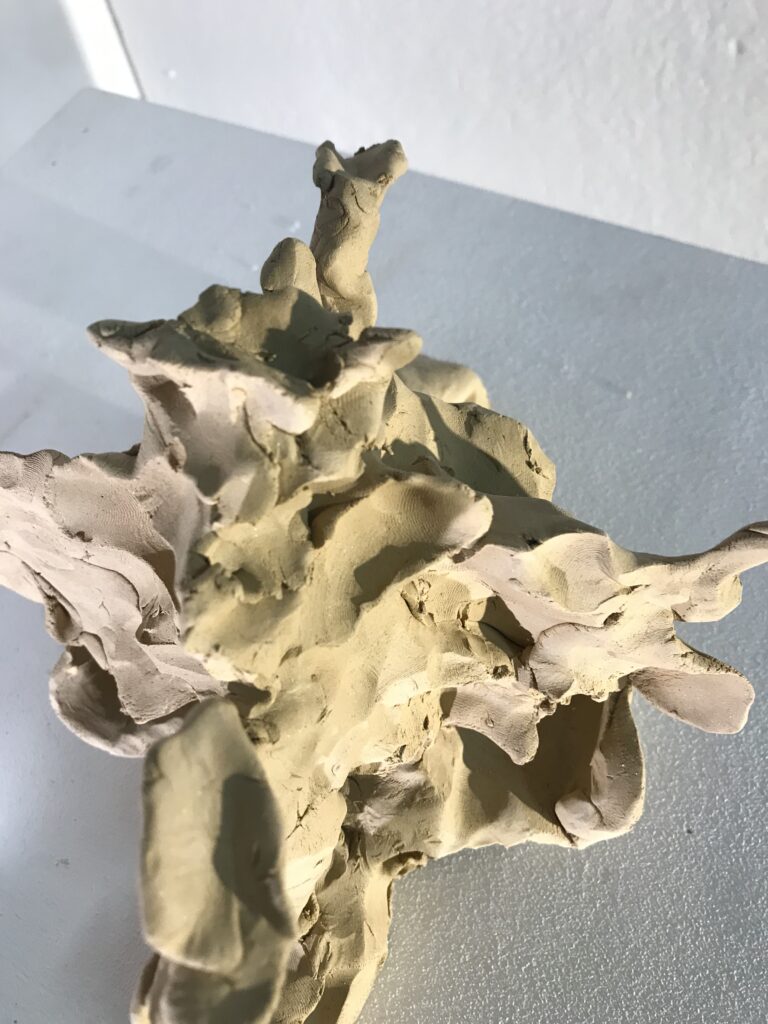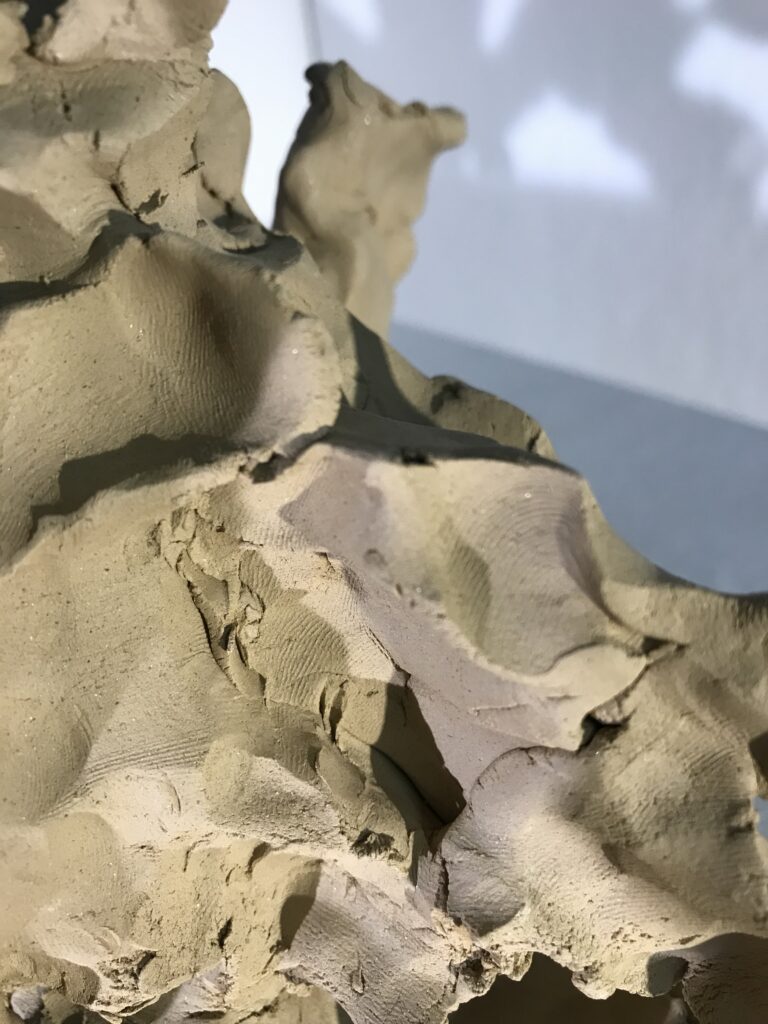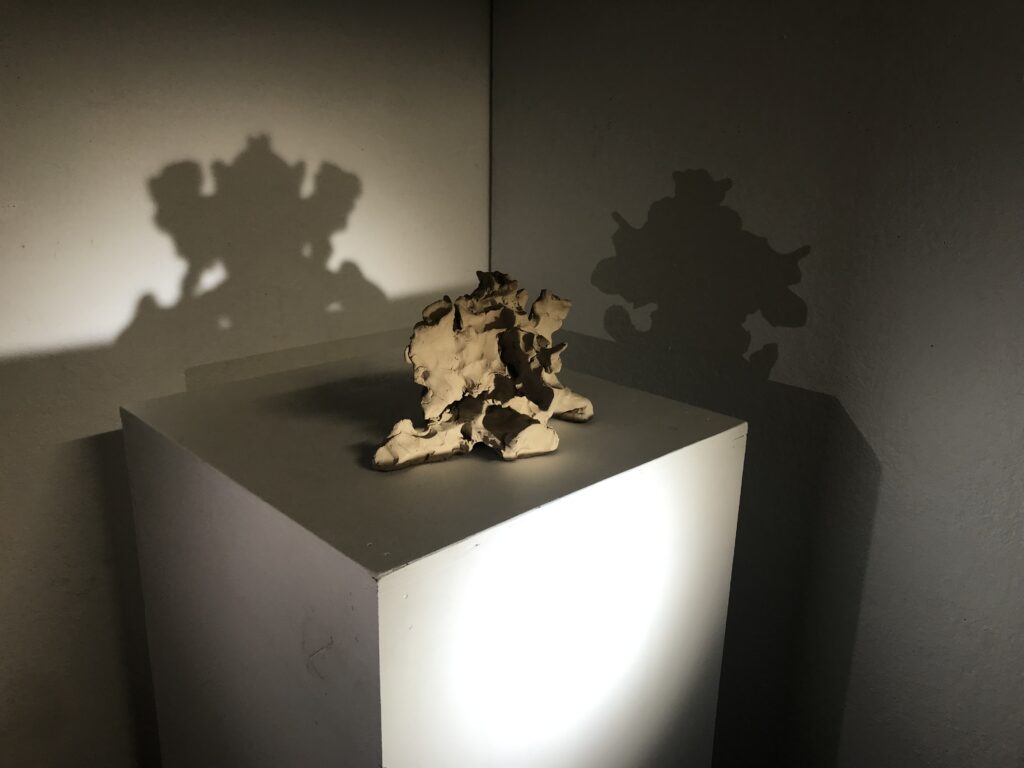I also used the lights with my clay Rorschach sculpture which had dried but luckily had stayed in one piece. The acrylic object is more clinical and more removed from the human body. Whilst the clay work is more organic, malleable, and human. Clay itself breaks down a lot faster than plastic, and it’s edges are rougher and less clean. I also didn’t fire this piece so it is very delicate and if in contact with water it will revert back to its original state. Making it a lot more malleable and easily changed, just like the human mind and body. With the acrylic piece I was more looking at the clinical side of Rorschach tests, whilst this reflects the ink blots raw, human, vulnerable use. The acrylic work is heavily focussed on symmetry and the verb ‘of symmetry’ whilst this is less focussed on that. The verb I would associate with it would be ‘to form’ The clay is formed using my hands leaving room for error and imperfections. My hands have left fingerprints that reflect the individuality of viewers perceptions of the ink blots.


These two contrasting takes on the Rorschach tests both observe how each viewer brain is different, yet how answers can be categorised into an accurate medical conclusion.

The seemingly random blob of clay create intentional shapes in the shadows. This disconnect from the object to the shadows is very interesting to explore especially in relation to the Rorschach tests. The clay shape is very human, yet the outcome (the shadows) are very uniform and categorical, which very much plays with the clinical/human contrast that the ink blots naturally have.
